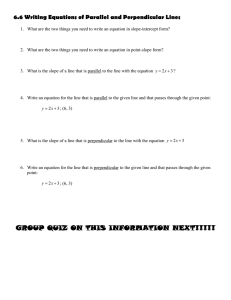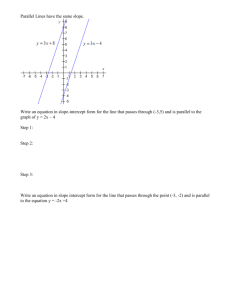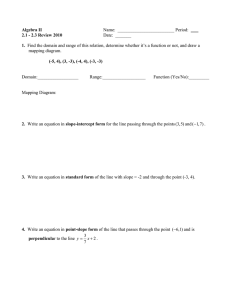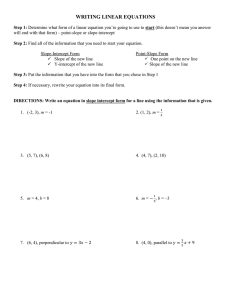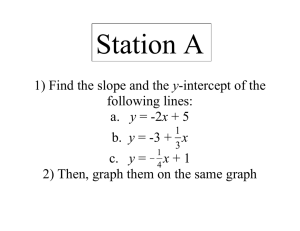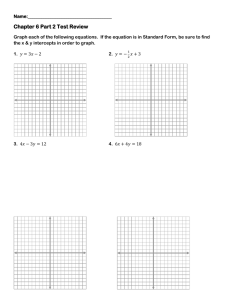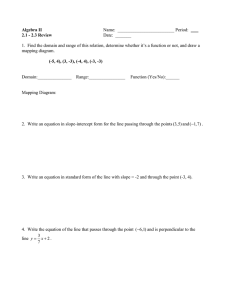Section 1.3: Linear Equations in Two Variables (Parallel & Perpendicular...
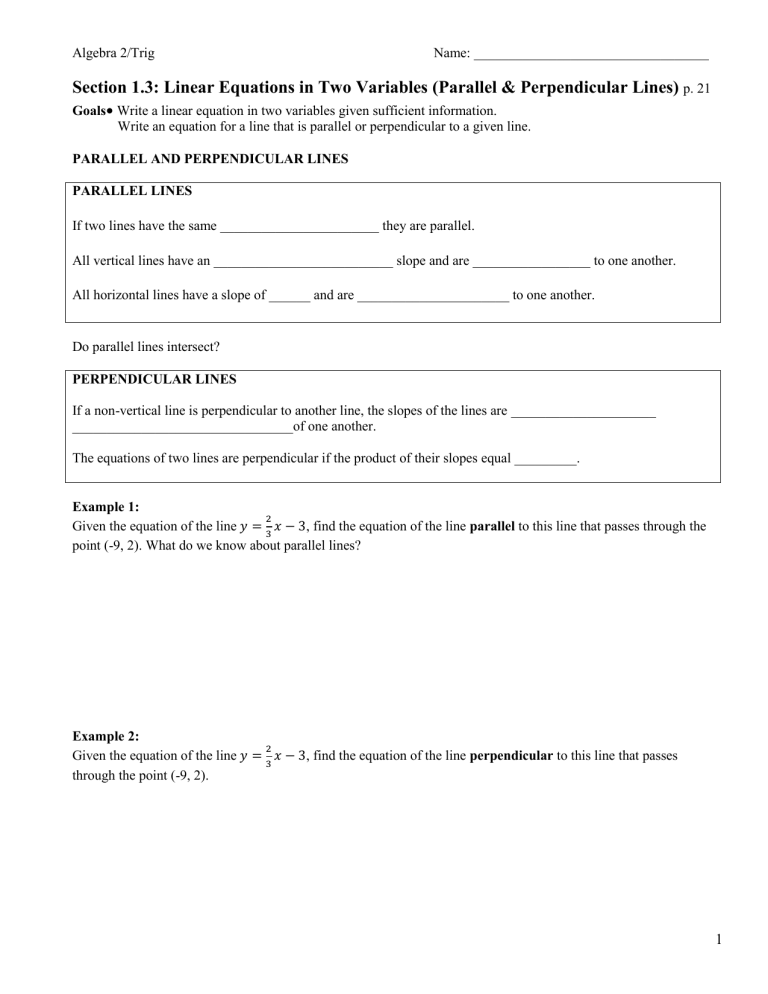
Algebra 2/Trig Name: __________________________________
Section 1.3: Linear Equations in Two Variables (Parallel & Perpendicular Lines)
p. 21
Goals
Write a linear equation in two variables given sufficient information.
Write an equation for a line that is parallel or perpendicular to a given line.
PARALLEL AND PERPENDICULAR LINES
PARALLEL LINES
If two lines have the same _______________________ they are parallel.
All vertical lines have an __________________________ slope and are _________________ to one another.
All horizontal lines have a slope of ______ and are ______________________ to one another.
Do parallel lines intersect?
PERPENDICULAR LINES
If a non-vertical line is perpendicular to another line, the slopes of the lines are _____________________
________________________________of one another.
The equations of two lines are perpendicular if the product of their slopes equal _________.
Example 1:
Given the equation of the line 𝑦 =
2
3 𝑥 − 3 , find the equation of the line point (-9, 2). What do we know about parallel lines? parallel to this line that passes through the
Example 2:
Given the equation of the line 𝑦 =
2
3 𝑥 − 3 , find the equation of the line perpendicular to this line that passes through the point (-9, 2).
1
Checkpoint:
1. Given the equation of the line y = 2x – 3, find the equation of the line perpendicular to this line that passes
through the point (4, 2).
2. Write an equation in slope-intercept form for the line that contains the point (3, -2) and is parallel to the line
4x – 2y = -6.
Example 3:
THE POINT-SLOPE FORM: _______________________________.
Using a slope of -2, and the point (-11, 3), write the equation of the line in point-slope form. Then rewrite the equation in slope-intercept form.
Checkpoint:
3. Using point-slope form, find the equation of the line that has a slope of -5 and passes through the point (4, -7).
2
APPLICATION:
Tom leaves his house and drives at a constant speed to go camping. On his way to the campgrounds, he stops to buy gasoline. Two hours after buying gas, Thom has traveled 180 miles from home, and 6 hours after buying gas he has travelled 480 miles from home. How far from home was Tom when he bought gas?
Solution:
Write a linear equation to model Tom’s distance, y , in terms of time x . Two hours after buying gas, Tom has traveled
180 miles and 6 hours later Tom has traveled 480 miles. We have two data points: (2, 180) and (6, 480). The line contains these two points.
1.) Find the slope using the two points.
2.) Write an equation. Begin with point-slope form. You can use either point.
3.) Write the equation in slope-intercept form.
4.) How far from home was Tom when he bought gas? (Remember, x represents the number of hours he traveled after he bought gas. What was the value of x when he bought gas?)
HW: Page 26 – 28, Problems 12 – 33, 3rds (12, 15, 18, etc), 36 – 52 EVENS, and 62 – 64.
Write out the problem and please show your work!
3
